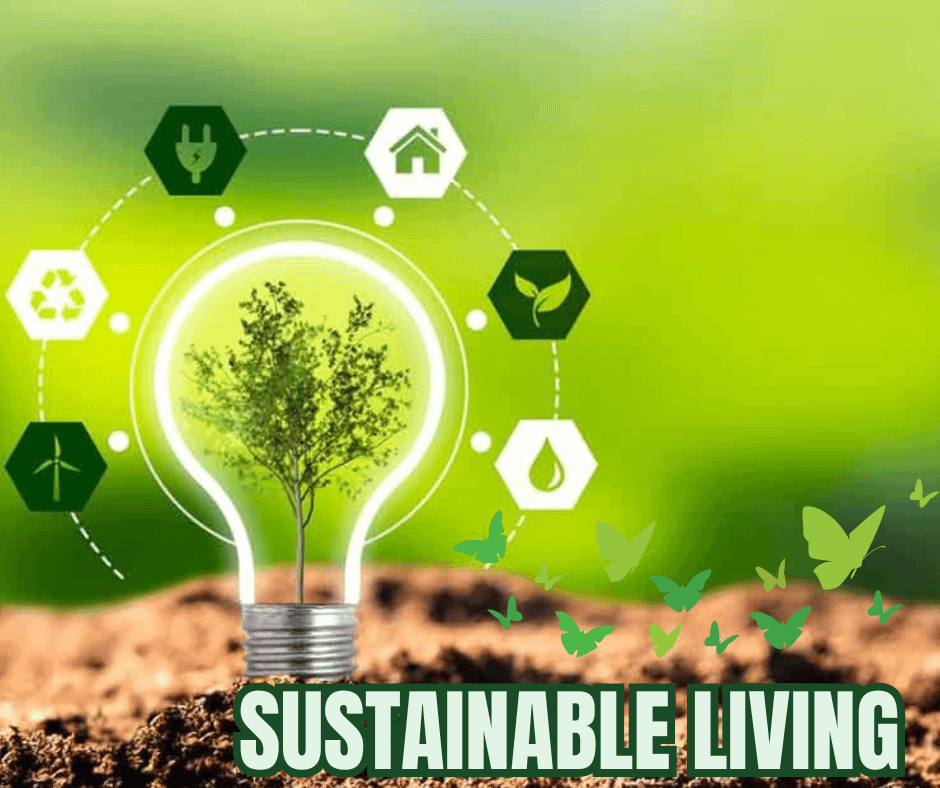What is Sustainable Living? Your Ultimate Guide To Save The Planet EARTH

What is Sustainable Living?
Sustainable living isn’t about being eco-conscious; it’s a way of life in balance, where one keeps at peace with nature by making conscious and responsible choices. Given the many emerging issues stressing our planet, such as climatic change, pollution, and resource depletion, sustainable practices are no longer an option but rather a need.
But how do you live sustainably? Sometimes, it can be overwhelming, but it’s really much more simple than you think. Let’s explore some of the core principles of living sustainably and then some practical ways to make daily life more eco-friendly.
Core Principles of Sustainable Living
Reducing Your Carbon Footprint
Your carbon footprint is essentially the trail of greenhouse gases left from your day-to-day activities, from every action, like driving a car to keeping the lights on. But here’s the thing you don’t need to change everything overnight. Start small.
Switch to energy-efficient appliances. Turn the lights off when you are not in the room. Even better, invest in renewable sources of energy such as solar panels if possible. The little things you do can change, such as walking instead of driving. Small ripples create big waves.
Minimal Waste
Millions of tons of plastic waste suffocate our oceans annually, mercilessly exterminating marine life. But it’s not just about plastic; it’s about rethinking everything we consume.
Think about it: for every single-use plastic bag, straw, or bottle skipped, that is a win. With reusable bags, bottles, and containers, that is how one starts to cut down on waste accumulating in landfills. Have food scraps? Compost them. Have old things? Repair rather than throw out. Anytime one breaks the cycle of consume, consume, consume, Mother Nature wins.
Conserving Natural Resources
Think of it: water, trees, fossil fuels-they are all not infinite. Once used up, what is left for the future generation? Sustainable living makes one stop and reflect on how resources are utilised.
Take shorter showers. Turn the faucet off while brushing your teeth. But when it comes to energy, even the tiniest actions-like unplugging computers or using smart thermostats-can amount to everything. Trees? Use recycled paper. Or take products made from materials that are easily replenished. Conservation doesn’t have to be an extreme sport. It need only be deliberate.
Ethical Consumerism
Every dollar you spend is a vote for what kind of world you want to live in. Ethical consumerism involves giving a second thought to buying: support companies that appreciate sustainability, fair trade, and cruelty-free practices.
We wear organic cotton and groceries from local farmers because it represents lessening our impact on the Earth. We are also ensuring that your money is going towards companies that take good care of the people and the planet. It’s not just about buying less, but buying better.
Effects of Unsustainable Living
Climate Change and Global Warming
Global warming is not something that will happen in the far future; it is some abstract entity. Nowadays, polar ice caps melt, sea levels rise, and weather patterns fluctuate more wildly than ever. Who is to blame? Unsustainable living, such as burning fossil fuels for energy, deforestation, and superfluous living, speeds up the damage.
We can’t entirely stop it but we have the capability to slow it down. Lowering carbon emissions, saving energy, and creating healthier habitations could reduce the impact we create and help the Earth heal.
Deforestation and Loss of Biodiversity
Forests are not only beautiful to watch, but they also provide a great ecosystem for absorbing carbon dioxide and sheltering countless species. However, with agriculture and urbanization, deforestation wipes out the existing ones. Every tree cut brings us closer to losing the entire ecosystem and making plant and animal life vulnerable.
Support reforestation and the use of products made from sustainable materials to protect such vital environments. Forests give us life; should we not protect them?
Pollution
The pollution has come to choke the Earth and is in every aspect of our breathing and into the very oceans that border us. Factories spew out their toxins, vehicles emit caustic emissions, and plastic waste was flooding our waterways.
It’s the fight against all that sustainable living. So, every time one picks an eco-friendly alternative, be it an electric vehicle or reduced plastic use, it is not just a personal decision but also one in opposition to all types of pollution. Tahoma
How to Live More Sustainably
Get Your Lifestyle Audited
Sustainable living begins with self-reflection. What are your current habits? How much waste do you generate? How much energy do you use? These are not just rhetorical questions. Take an accounting of daily life and make changes that work for you. Change disposable products out for reusables, reduce your electricity use, and watch how the small steps snowball.
Set Realistic Goals
Take your time. All this is a marathon, not a sprint. Start with achievable goals: maybe more often recycling, cutting back on meat, or biking once a week to work. As you grow in habit, take on more. These small steps will generate momentum in themselves to move into a larger impact.
Sustainable Living at Home
Energy Efficiency
Your home is one of the largest energy drains-but it doesn’t have to be. Start by switching to LED bulbs, unplugging devices, and investing in energy-efficient appliances. If you’re ready for a bigger commitment, consider installing solar panels. Yes, there’s an upfront cost, but over time, by doing this, you will save money and help the environment by reducing your carbon footprint.
Water Conservation
A precious commodity, and what do we do? Waste the stuff as if it is free from the mindset. Fix leaky faucets, change out low-flow showerheads, and collect rainwater to feed your garden- all that is pretty simple. Water is not infinite; treat it as a valuable resource.
Reducing Household Waste
Homes generate a lot of waste. Of this, how much is actually necessary? Recycling, composting, and reusables drastically reduce the quantity that ends up in landfills. Never throw anything away; instead, try to think where this can be utilized, reused, or recycled.
Sustainable Food Choices
Eat Locally and Seasonally
Let’s not forget that the food you eat has a carbon footprint, too. By choosing locally grown, seasonal produce, you cut down on transportation emissions and enjoy fresher, tastier food. Support your local farmers-your taste buds and the planet will thank you.
Reduce Meat Consumption
Animal agriculture is responsible for a significant portion of total greenhouse gas emissions, especially methane. Reducing meat consumption, even by a small amount, can significantly impact one’s ecological footprint.In addition, plant-based diets tend to improve health across the board.
Green Transportation
Ride your Bike, Walk, or take Public Transportation
Transportation is one of the largest contributors to emissions. It’s pretty easy to find substitutes to driving whenever possible. By biking, walking, or taking public transportation, you would reduce your carbon footprint and save money at the same time, with more improvement in your health.
Consider Electric Vehicles
If driving is absolutely unavoidable, electric vehicles are a far cleaner replacement for those petrol guzzlers. These have been slowly turning into an affordable option, and most governments have various schemes for exemptions relating to the purchase of these automobiles. That would be a wise investment for both your wallet and the environment.
Sustainable Fashion Choices
The Impact of Fast Fashion
Fashion is one of the largest polluters in the world. Inexpensive, mass-market clothing is designed to wear once or twice and then discard, contributing to waste. Otherwise, buy fewer, better pieces. Choose sustainable fabrics and go for brands committed to ethical production practices.
Capsule Wardrobe
The capsule wardrobe focuses on making do with a small collection of versatile items that stand the test of time. Just by nature, a capsule reduces your urge to buy new clothes, thus helping waste reduction and keeping your fashion choices sustainable.
Conclusion: A More Sustainable Future
Sustainable living isn’t about perfection; it’s about progress. Every small, intentional action you take joins to create a greater movement. Whether you conserve energy, reduce waste, or make more mindful consumer choices, your actions matter. The future of sustainable living is at hand-in our hands, we can together create a healthy, sustainable planet.
